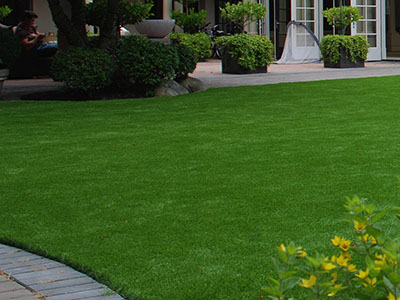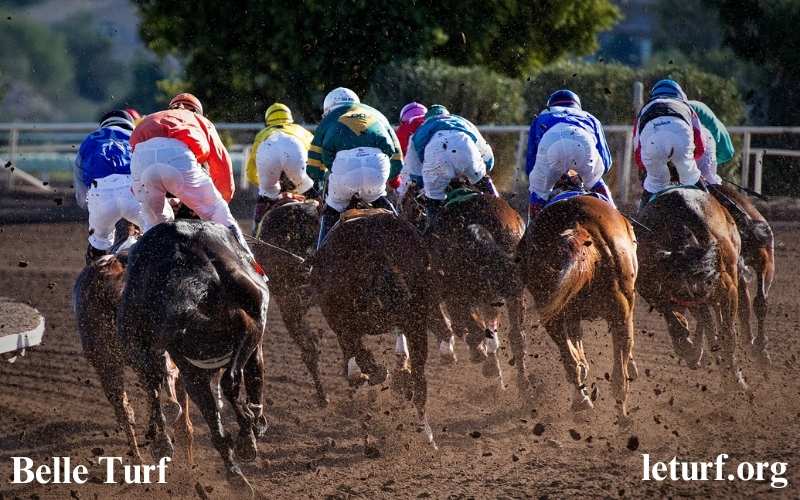Belle Turf offers lush, vibrant lawns that transform any outdoor space. This synthetic grass solution is gaining popularity for its beauty and low maintenance.
Belle Turf is not just another grass alternative. Its realistic appearance and durable nature make it a top choice for homeowners and businesses alike. Imagine having a green lawn all year without the hassle of watering, mowing, or weeding. Belle Turf provides that convenience.
Whether you want a play area for kids, a relaxing garden, or an attractive frontage, this turf fits the bill. It’s eco-friendly, too, saving water and reducing the use of harmful pesticides. Ready to explore the benefits of Belle Turf? Read on to discover why this synthetic grass might be the perfect choice for your outdoor needs.
Introduction To Belle Turf
Imagine stepping into your yard and being greeted by a lush, green lawn. That’s what Belle Turf offers. It’s not just a product, it’s a lifestyle choice. With Belle Turf, you get a beautiful lawn without the hassle of maintenance.
What Is Belle Turf?
Belle Turf is a type of artificial grass. It looks and feels like real grass. It’s designed to stay green all year round. This makes it perfect for any climate. It’s made from high-quality materials, ensuring durability and longevity.
Here are some key features of Belle Turf:
- Made from UV-resistant fibers
- Soft and realistic texture
- Pet-friendly and safe for children
- Low maintenance
Benefits Of A Green Lawn
A green lawn has many benefits. It enhances the appearance of your property. This can increase its value. It also provides a safe place for kids to play. Pets love it too.
Other benefits include:
| Benefit | Description |
|---|---|
| Environmental Impact | Belle Turf reduces water usage. |
| Cost-Effective | Save money on lawn care and water bills. |
| Allergen-Free | No pollen, reducing allergy symptoms. |
In summary, Belle Turf offers a hassle-free, green lawn. It’s a smart choice for homeowners.
Choosing The Right Grass
When creating a beautiful lawn, choosing the right grass is crucial. The right grass enhances the look and feel of your outdoor space. It also ensures durability and ease of maintenance. Belle Turf offers various grass options to suit different needs and preferences.
Types Of Grass
Belle Turf provides several types of grass. Each type has unique features and benefits. Some popular options include Bermuda, Zoysia, and Fescue. Bermuda grass is known for its heat tolerance. Zoysia grass is popular for its fine texture. Fescue grass grows well in cooler climates.
Climate Considerations
Climate plays a significant role in grass selection. Warm-season grasses like Bermuda thrive in hot climates. Cool-season grasses like Fescue do better in colder regions. Consider your local weather patterns before making a choice. This ensures your lawn stays lush and healthy throughout the year.
Soil Preparation
Proper soil preparation is crucial for a healthy Belle Turf. It ensures strong roots and a lush, green lawn. Follow these steps to prepare your soil for planting.
Testing Soil Quality
Begin by testing your soil. Use a soil testing kit to check pH levels and nutrient content. This helps determine what your soil needs for optimal turf growth.
Common soil tests include:
- pH level
- Nitrogen
- Phosphorus
- Potassium
These tests identify deficiencies or imbalances. Knowing this helps you amend the soil accordingly.
Soil Amendments
Once you know your soil’s condition, you can add amendments. These improve the soil’s structure and nutrient content.
Common soil amendments are:
- Compost: Adds organic matter and improves soil structure.
- Lime: Raises soil pH if it is too acidic.
- Sulfur: Lowers soil pH if it is too alkaline.
- Fertilizers: Provide essential nutrients like nitrogen, phosphorus, and potassium.
Work amendments into the soil to a depth of about 6-8 inches. This ensures they are well mixed and accessible to plant roots.
| Amendment | Purpose |
|---|---|
| Compost | Adds organic matter, improves structure |
| Lime | Raises soil pH |
| Sulfur | Lowers soil pH |
| Fertilizers | Provide essential nutrients |
By following these steps, you create a healthy environment for your Belle Turf. Proper soil preparation leads to a vibrant, thriving lawn.

Credit: greenlandturf.com
Planting Techniques
Planting techniques are crucial for establishing a healthy Belle Turf. Proper methods ensure the grass grows strong and lush. In this section, we will explore two main techniques: seeding and sodding. We will also discuss the best time to plant your Belle Turf.
Seeding Vs. Sodding
Seeding involves spreading grass seeds across the soil. It is cost-effective and allows for more grass variety. This technique requires patience as seeds take time to grow.
Sodding, on the other hand, involves laying down pre-grown grass. This method provides an instant lawn but can be more expensive. Sodding gives immediate results but requires careful installation and maintenance.
Proper Planting Time
The best time to plant Belle Turf varies by region. In cooler climates, spring or early fall are ideal. These seasons offer mild temperatures and adequate rainfall.
In warmer regions, late spring or early summer works best. Avoid planting during extreme heat or cold. Proper timing ensures better grass establishment and growth.
Watering Strategies
Effective watering strategies are crucial for maintaining a lush, green Belle Turf lawn. Proper watering ensures your lawn stays healthy and vibrant. This section covers key aspects of watering, including the best irrigation systems and an ideal watering schedule.
Irrigation Systems
Choosing the right irrigation system for your Belle Turf is essential. There are different types of systems available, each with its own benefits.
| Irrigation System | Pros | Cons |
|---|---|---|
| Sprinkler Systems |
|
|
| Drip Irrigation |
|
|
Watering Schedule
Setting a proper watering schedule is key to a thriving Belle Turf lawn. Watering at the right times ensures optimal water absorption and reduces wastage.
- Early Morning: The best time to water is early morning, between 6 AM and 10 AM. This allows water to soak into the soil before the heat of the day.
- Frequency: Water your lawn 2-3 times a week. Avoid daily watering to prevent shallow root growth.
- Duration: Aim for 30 minutes per session. Ensure the soil is moist to a depth of 6 inches.
Maintaining a consistent watering schedule will promote deep root growth and a healthier Belle Turf lawn. Remember, overwatering can be as harmful as underwatering. Monitor your lawn regularly and adjust your schedule as needed.

Credit: bellaturf.ca
Maintenance Tips
Keeping your Belle Turf lush and green needs regular maintenance. Here are some easy and effective tips to ensure your turf remains healthy and vibrant.
Mowing Guidelines
Mowing is essential for the health of your Belle Turf. Follow these steps:
- Frequency: Mow your turf once a week during the growing season.
- Height: Keep the grass height between 2 to 3 inches.
- Blades: Ensure mower blades are sharp to prevent damage.
Weed Control
Weeds can ruin the look of your Belle Turf. Use these tips to keep them at bay:
- Pre-emergent Herbicides: Apply in early spring to prevent weed seeds from sprouting.
- Spot Treatment: Use post-emergent herbicides to target and kill existing weeds.
- Manual Removal: Remove weeds by hand to avoid chemical use.
Regular maintenance ensures your Belle Turf looks its best. Follow these guidelines, and your lawn will thank you.
Fertilization Practices
Fertilizing your Belle Turf is essential for maintaining its lush, green appearance. Proper fertilization practices can transform your lawn into a beautiful and healthy space. Let’s dive into the best methods for choosing and applying fertilizers.
Choosing Fertilizers
First, determine the specific needs of your Belle Turf. Different grasses have unique nutrient requirements. Soil testing is crucial. It helps identify deficiencies and guides your fertilizer choice. Look for a balanced fertilizer with essential nutrients. Nitrogen, phosphorus, and potassium are key. Choose slow-release fertilizers for steady nutrient supply. Organic options can also benefit the soil’s health.
Application Techniques
Proper application ensures even nutrient distribution. Use a broadcast spreader for large areas. Handheld spreaders work well for smaller spaces. Apply fertilizers evenly to avoid patchy growth. Follow the manufacturer’s instructions. Over-fertilizing can damage the turf. Water the lawn after fertilization. It helps the nutrients penetrate the soil. Timing is vital. Fertilize during the growing season for best results.
Pest And Disease Management
Belle Turf ensures healthy lawns by using effective pest and disease management techniques. These methods protect your turf from common threats, keeping it lush and green.
Maintaining a healthy Belle Turf lawn requires proper pest and disease management. An untreated lawn can become a breeding ground for pests and diseases. This can damage the beauty and health of your turf. Understanding common pests and diseases can help in prevention and treatment.
Common Lawn Pests
Several pests can damage Belle Turf. Grubs are common. They feed on grass roots. This causes brown patches. Another common pest is the chinch bug. It sucks out the sap from grass blades. This leads to yellow or brown areas. Armyworms are also a threat. They eat the blades, leaving bare spots.
Disease Prevention
Preventing diseases in Belle Turf starts with proper maintenance. Water your lawn early in the morning. This allows the grass to dry before nightfall. Mowing your lawn regularly is also important. Keep the grass at the recommended height. Use sharp blades to avoid tearing the grass. Fertilize your lawn appropriately. This strengthens the grass and makes it resistant to diseases. Regularly inspect your lawn. Look for signs of disease such as discolored patches or unusual growth. Treat any issues promptly to prevent spread. With proper care, your Belle Turf will remain lush and healthy. “`
Sustainable Lawn Care
Caring for your lawn sustainably is more important than ever. Belle Turf offers eco-friendly methods to keep your yard green and healthy. Sustainable practices protect the environment and save resources.
Organic Methods
Organic lawn care uses natural products instead of chemicals. These methods promote soil health and biodiversity. Compost and natural fertilizers enrich the soil. They provide essential nutrients without harmful side effects.
Organic pest control is another vital part. Use beneficial insects to control pests. Ladybugs, for example, eat aphids. This method reduces the need for chemical pesticides.
Water Conservation
Water conservation is crucial for sustainable lawn care. Overwatering wastes water and harms your lawn. Belle Turf suggests watering deeply but less often. This encourages deep root growth.
Use rain barrels to collect rainwater. This reduces your reliance on tap water. Drip irrigation systems are also effective. They deliver water directly to the roots, minimizing waste.

Credit: coolmore.com
Seasonal Care
Seasonal care is crucial for maintaining the lush, green appearance of your Belle Turf. Each season brings different challenges and requirements. Proper care ensures your lawn stays healthy and beautiful throughout the year.
Spring And Summer
Spring and summer are the growing seasons for Belle Turf. During this time, your lawn needs extra attention.
- Watering: Water deeply but infrequently. Aim for early morning watering to prevent evaporation.
- Mowing: Keep the grass at the recommended height. Avoid cutting more than one-third of the grass blade.
- Fertilizing: Use a balanced fertilizer. Apply it in early spring and again in late summer.
- Weeding: Remove weeds by hand or use a selective herbicide.
A consistent routine during these months will promote strong root growth and prevent stress on the turf.
Fall And Winter
Fall and winter are times to prepare your Belle Turf for the colder months ahead. Proper care now ensures your lawn bounces back in spring.
- Raking: Keep the lawn free of leaves and debris to prevent mold growth.
- Aeration: Aerate the soil to reduce compaction and improve water absorption.
- Overseeding: Apply grass seed to thin areas to maintain a dense turf.
- Fertilizing: Use a winterizing fertilizer high in potassium. This helps strengthen the grass for winter.
Winter care is less intensive, but essential. Avoid heavy foot traffic on frozen grass to prevent damage.
By following these seasonal care tips, your Belle Turf will remain vibrant and healthy all year long.
Frequently Asked Questions
What Is Belle Turf?
Belle Turf is a premium synthetic grass product designed for landscaping. It offers a realistic look and feel, requiring minimal maintenance.
How Durable Is Belle Turf?
Belle Turf is highly durable and can withstand heavy foot traffic. It’s designed to last for many years without significant wear.
Is Belle Turf Safe For Pets?
Yes, Belle Turf is pet-friendly. It’s made from non-toxic materials and is easy to clean, making it safe for pets.
How Do You Maintain Belle Turf?
Maintaining Belle Turf is simple. Regularly remove debris, rinse with water, and brush the fibers to keep it looking fresh.
Conclusion
Belle Turf offers a great solution for your lawn needs. It is easy to maintain and looks beautiful. The grass stays green all year long. This saves both time and water. Many homeowners find it to be a smart choice.
Consider Belle Turf for a hassle-free, lush lawn. Enjoy the benefits of a pristine yard with less effort. Make your outdoor space inviting and fresh. Choose Belle Turf today for a stunning lawn.




